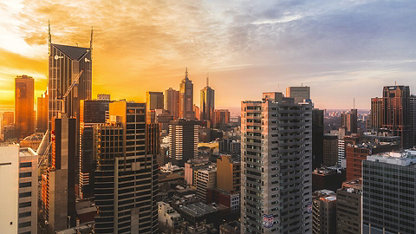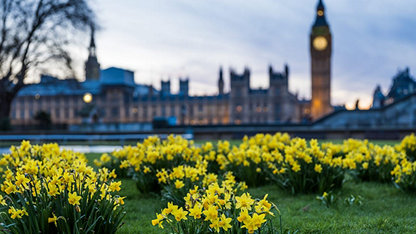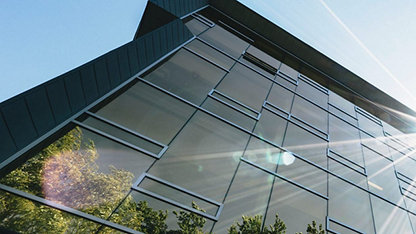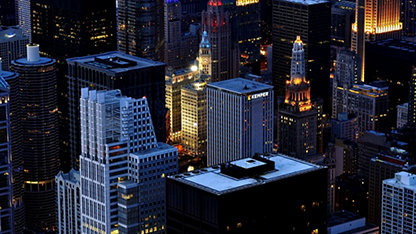The year is 2168. I’m sitting here in my office. Through the window I see a beautiful lake and parklands; I hear birds singing. Except that’s not really birdsong and that’s not really a lake. It’s all simulated. Physically, I am in central London.
These days, I hardly go outside – my building does everything for me, even monitors my health. Besides, we got rid of all the public spaces long ago. Falling tax bases meant we couldn’t afford to pay for their upkeep or to adapt them to the effects of climate change. The Royal Parks have been sold off; developers have filled them with stacks of tiny, pigeon-hole units. Inside, people exist in a virtual world.
This is my nightmare. What signals are there that we might be sleepwalking into it? Declining investment from national and local governments in public infrastructure and councils struggling to fund maintenance, might be one. Maybe the monetisation of everything, even our public spaces. Then the possibility that we are shaping our built environments around a technology that is moving too fast for us to fully grasp its implications.
“This is my nightmare. What signals are there that we might be sleepwalking into it? Declining investment from governments in public infrastructure and councils struggling to fund maintenance, might be one. Maybe the monetisation of everything, even our public spaces.”
Perhaps the car is a useful analogy. If we look at how cities evolved in the 20th century, they were built around the notion of the car moving you from A to B. Now, at the start of the 21st century, we are trying to undo the problems the car has created, problems that we did not foresee. And they are endemic: they have polluted our cities, made them dangerous to walk around, encouraged us to be physically lazy. Undoing the damage is not easy – we can’t just redesign Los Angeles or Houston or Bangkok.
Today, another machine of convenience is choreographing our lives: the smartphone and all of its incumbent digital infrastructure. The iPhone is just a decade old and look at the societal impact it has had. Will we wake up 150 years from now and realise that this was the car all over again? That lithium batteries are cancerous; that we’ve become physically and socially isolated?
Don’t get me wrong, I’m not against technology. And I see a lot of potential benefits in big data, in intelligent buildings and spaces. But the question I have, which I don’t have an answer for, is: do we realise what we are losing?
What makes me saddest about this dystopian picture is the loss of the commons. When I go out onto the street, into a park, a square, it doesn’t matter how rich or poor I am. We’re all equals. I do not have to have the latest smartphone to buy access to that space. Perhaps our future virtual spaces will be democratic. Or perhaps the rich will exist in the best virtual reality environments, and the poor will stay in a dark box with a very old phone.
To avoid that future, we need to expand our repertoire of how we think about urban infrastructure. We need to realise that sustainability is not just about solar panels on rooftops; that technology is not just about convenience; and that much of the infrastructure that sustains a city – social engagement, civic mindedness, community empowerment – cannot be obviously monetised. Yet it is as important as steel beams, concrete and fibre-optic cables.
“I think infrastructure serves three purposes: to protect, to provide, to participate. In our rush to achieve the first two, we must not forget about the last.”
I think infrastructure serves three purposes: to protect, to provide, to participate. In our rush to achieve the first two, we must not forget about the last. When I propose urban agriculture as part of schemes, the question I always get is: “Well, how many people will it feed?” This misses the point. Often it doesn’t matter if you don’t feed anyone – an allotment, a space to grow food, is as good as a community centre. Growing food bridges cultural and linguistic boundaries.
A broader definition of what constitutes public infrastructure would galvanise people. We should be as concerned about the decline of the sakura, the cherry blossoms, in Japan as we are about other sustainability issues. Every March, the coming of the sakura is a national event, as people come together to celebrate the arrival of spring. But in recent years, some cities have seen no blossoms: urban heat island effects – the phenomenon that the city is often a few degrees higher in temperature than the surrounding countryside – mean that the seasons skip spring and jump straight to summer.
This is wiping away a vital piece of a social infrastructure and we need to be mindful of the consequences.
Loneliness is another example. As our society ages, adapting spaces to the practical requirements of old age is the easy part; fostering opportunities for social interaction is more difficult. Recent studies have shown that loneliness is a major health risk for adults, especially the elderly. Another survey has shown that there are lots of family-sized houses in cities occupied by one or two elderly people.
At a time when young families all over the UK are struggling to find affordable housing in the city, is there is an opportunity here to start a dialogue between the generations? One could imagine innovative incentive schemes that promote co-living, or that offer elderly homeowners the opportunity to lease their properties to young families, and use the benefits to subsidise themselves in a cared-for community.
It is by starting to think about the role of our civic infrastructure, how we legislate and regulate for it, that we will transform what we choose to develop in the future.















